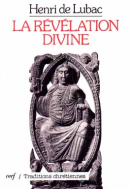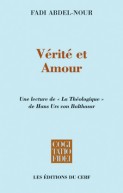L'Église comme communion et comme institution - CF 282
d' Alain Nisus
Collection Cogitatio Fidei - N° 282
512 pages - avril 2012
49,50€
Qu'entend-on par les formules : « l'Église est une communion », « l'Église est une institution » ? Et surtout, comment s'articulent-elles ? C'est l'objet du présent ouvrage : proposer un dialogue œcuménique dans lequel la pensée du cardinal Yves Congar est interrogée à partir de la tradition des Églises de professants. Confrontées à l'articulation de la dimension communautaire de la foi chrétienne et des besoins de structures, ainsi qu'au rapport entre l'œuvre de l'Esprit dans les croyants et les formes que revêt la vie ecclésiale, la pensée de Congar et une ecclésiologie enracinée dans la tradition des Églises de professants s'interpellent, se corrigent et se fécondent mutuellement. Dans un premier temps, l'étude présente l'évolution de Congar et sa contribution au sujet, en particulier l'état de sa réflexion avant le concile Vatican II. On aborde ensuite l'œuvre postérieure à Vatican II lorsque Congar se tourne résolument vers la pneumatologie, ce qui le conduit à élargir sa vision, et élabore une « ecclésiologie pneumatologique » qui comprendra et articulera autrement les dimensions communautaires et institutionnelles de l'Église. Dans un deuxième temps, on apporte — à partir de la critique congarienne d'une certaine ecclésiologie protestante : logique « associationniste », « contractualiste », « congrégationaliste », « prophétique », « individualiste » — quelques corrections à l'ecclésiologie des Églises de professants particulièrement vulnérables à ces critiques. La réflexion de Hans Dombois sur l'institution permet de dépasser certaines impasses ecclésiologiques. Cela ouvre la voie à la thèse selon laquelle l'Esprit-Saint constituerait l'Église par l'œuvre de régénération des croyants et par les interactions ecclésiales confessantes, qu'il la structure par le moyen de charismes divers et variés.
--
What do we mean by the expressions: ‘the Church is a communion’ or ‘the Church is an institution'? And how do they interact? The aim of this book is to propose and ecumenical dialogue in which the thoughts of Cardinal Yves Congar are explored in the light of the tradition of those Churches which require a strict profession of faith from their members, as opposed to those open to the general public. Obliged to reconcile the communitarian dimension of the Christian faith and the need for structures, as well as the relation between the work of the Spirit in believers and the various forms ecclesial life can take on, Congar’s ideas, and an ecclesiology rooted in Church tradition, challenge, correct and fructify each other. Firstly, this study shows Congar’s evolution and his contribution to the subject, especially his reflection before Vatican II. Then the work after Vatican II is treated, when Congar turns resolutely to pneumatology, which leads him to widen his vision and elaborate a ‘pneumatological ecclesiology' which conceives and rethinks the community and institutional dimensions of the Church. In a second part, some corrections are made - based on Congar’s critique of a certain Protestant ecclesiology as being ‘associationist’, ‘ contractualist’, ‘congregationalist’, ‘prophetic’ , ‘individualist’ – to the ecclesiology of these churches, which are particularly open to this criticism. Hans Dombois’ reflection on the institution permits us to overcome certain ecclesiological difficulties. This opens a path to the thesis which states that the Holy Spirit, by its work of regeneration of believers and by ecclesial interactions, constitutes the Church and structures it by means of various different charisma.
--
What do we mean by the expressions: ‘the Church is a communion’ or ‘the Church is an institution'? And how do they interact? The aim of this book is to propose and ecumenical dialogue in which the thoughts of Cardinal Yves Congar are explored in the light of the tradition of those Churches which require a strict profession of faith from their members, as opposed to those open to the general public. Obliged to reconcile the communitarian dimension of the Christian faith and the need for structures, as well as the relation between the work of the Spirit in believers and the various forms ecclesial life can take on, Congar’s ideas, and an ecclesiology rooted in Church tradition, challenge, correct and fructify each other. Firstly, this study shows Congar’s evolution and his contribution to the subject, especially his reflection before Vatican II. Then the work after Vatican II is treated, when Congar turns resolutely to pneumatology, which leads him to widen his vision and elaborate a ‘pneumatological ecclesiology' which conceives and rethinks the community and institutional dimensions of the Church. In a second part, some corrections are made - based on Congar’s critique of a certain Protestant ecclesiology as being ‘associationist’, ‘ contractualist’, ‘congregationalist’, ‘prophetic’ , ‘individualist’ – to the ecclesiology of these churches, which are particularly open to this criticism. Hans Dombois’ reflection on the institution permits us to overcome certain ecclesiological difficulties. This opens a path to the thesis which states that the Holy Spirit, by its work of regeneration of believers and by ecclesial interactions, constitutes the Church and structures it by means of various different charisma.
- Dimensions : 135x215x25
- ISBN : 9782204094542
- Poids : 630 grammes
Avec la collaboration de : Hervé Legrand
DU MÊME AUTEUR
> VOIR TOUS LES LIVRES DE l'AUTEUR
DANS LA CATÉGORIE
Henri de Lubac – La rencontre au cœur de l'Église
336 pages - nov. 2006
Révélation divine – Affrontements mystiques – Athéisme et sens de l'homme
de Henri de Lubac
592 pages - juin 2006











